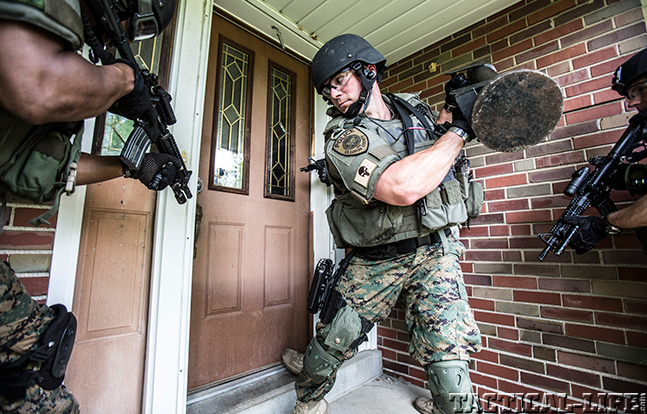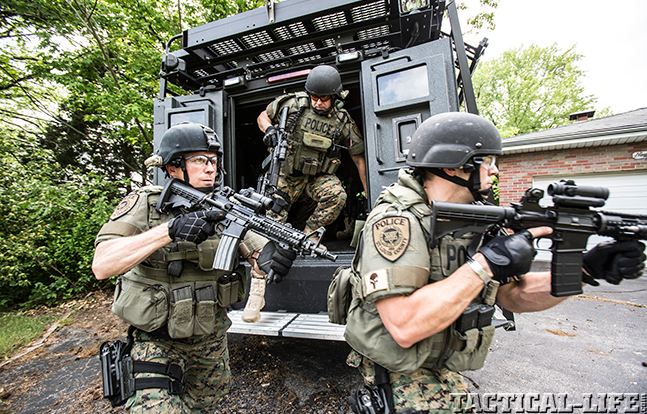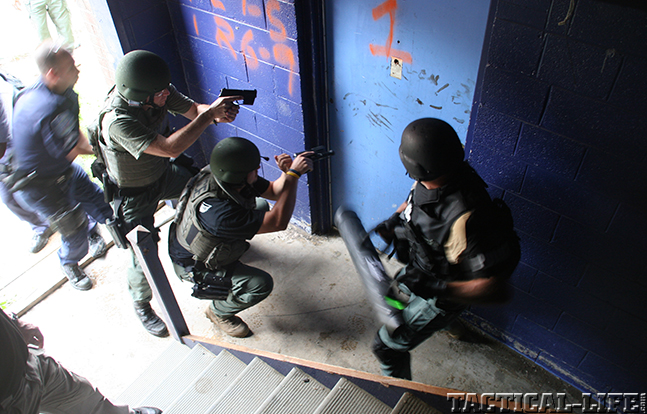In the upcoming October 2014 issue of GUNS & WEAPONS FOR LAW ENFORCEMENT, author Scott Oldham discusses SWAT entry tactics, and how the standard dynamic entry may be outdated.
Oldham writes, “For years tactical units have been trained to use dynamic entry techniques to quickly breach, enter and secure a crisis site. The thought process behind this method of entry was to quickly overwhelm and subdue anyone within a structure before resistance could be mounted. This reasoning always seemed sound, as the three tenants of tactical actions have long been seen as speed, shock and violence of action.
“While having teams of assaulters storm buildings, lob ‘flashbangs’ and subdue terrorists or criminals has become the daily norm for some law enforcement entities, perhaps there is a better way.
Advertisement — Continue Reading Below
“For many years there has been a symbiotic ‘push/pull’ between military and law enforcement special operations units. At various points in history, each has led the way in terms of tactics, weapons systems and operational knowledge. In short, it has been the operational tempo of these teams that has driven advances. Throughout the 1980s and 1990s, law enforcement special operations teams had typically more breaching operations than their military brethren. After 9/11, however, that situation changed dramatically.
“When military special operations forces began to operate more consistently in urban environments, particularly those of Iraq, they learned, often in blood, that the dynamic entry was not always the appropriate technique of choice when clearing a building. Losses mounted as standard dynamic entry techniques were used over and over to secure buildings. Finally, the thought processes behind ‘routine’ clearing began to change, and those techniques have slowly started bleeding over into the law enforcement special operations community.
“Speed is the key in dynamic entries. The thought process is that speed in occupying a structure directly correlates to the safety of the team. In most cases, this is true in that action is always quicker than reaction. Put bluntly, if someone does not know you are coming or has not planned for it in advance, then the chances of them being able to react quickly enough to offer substantial resistance is greatly decreased.”
Advertisement — Continue Reading Below
To learn more, check out the October 2014 issue of GUNS & WEAPONS FOR LAW ENFORCEMENT, available on newsstands and digitally July 15, 2014. To subscribe, go to Tactical-Life.com/subscribe.


























